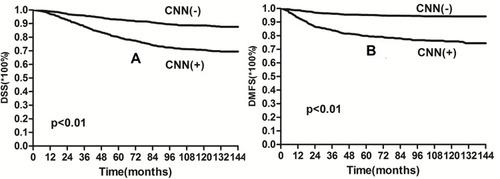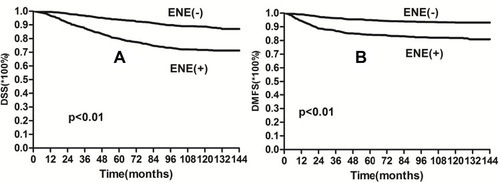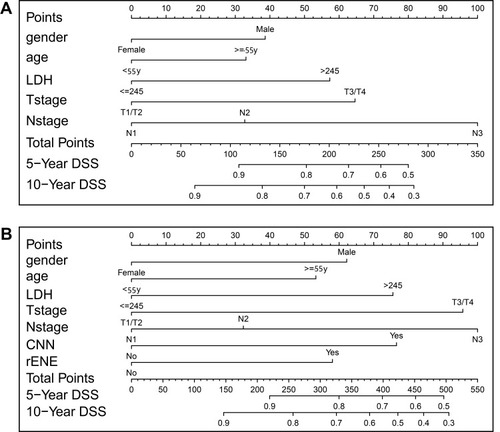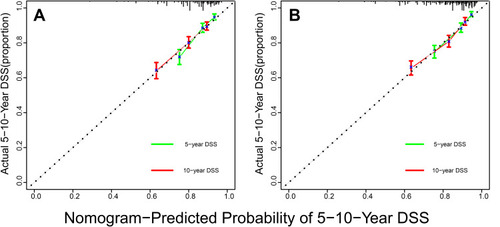Figures & data
Figure 1 Representative MRI results illustrating the cervical nodal necrosis (CNN) and extranodal extension (ENE) in two patients with NPC. (A) Axial T1WI and (B) Axial T2WI in a 41-year-old man with CNN (arrows); (C) Axial T1WI and (D) contrast-enhanced T1WI in a 45-year-old man with ENE infiltrating the adjacent muscle (stars).

Table 1 Characteristics of 1752 Patients and Univariate Analysis
Table 2 Failure Patterns in Nasopharyngeal Carcinoma (NPC) Patients
Table 3 Multivariate Analysis of Prognostic Factors




